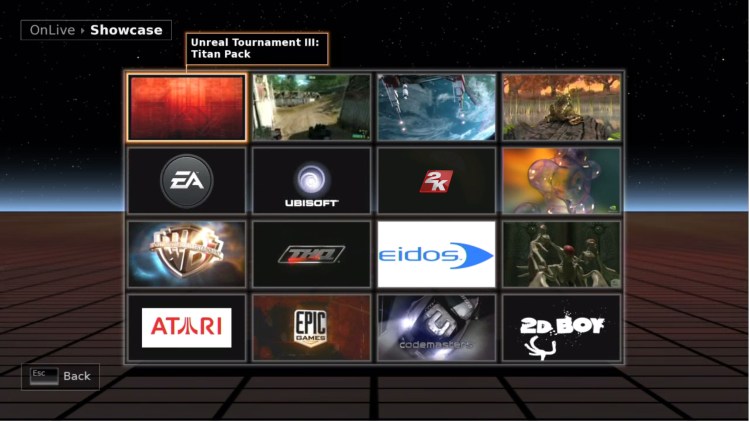 This post is part of a new series called “Game On” brought to you by Akamai Technologies. As game publishers deal with increasingly more complex issues, this series looks at issues as diverse as managing worldwide launches, security, second screen integration and the changing business model of freemium games. Read the whole series here.
This post is part of a new series called “Game On” brought to you by Akamai Technologies. As game publishers deal with increasingly more complex issues, this series looks at issues as diverse as managing worldwide launches, security, second screen integration and the changing business model of freemium games. Read the whole series here.
The cloud has entirely transformed the way we experience movies, music, and video games, giving unprecedented access to titles. The days of downloading content to be stored by consumers may not be numbered exactly, but they’re certainly diminishing rapidly.
In the video game market, the transition has been a gradual one starting out exclusively as a retail-focused business model, later migrating online. But now when titles launch, consumers want instant gratification. Entire games are now purchased and downloaded from virtual storefronts, meaning gamers can accumulate an entire library of titles without ever leaving the house.
Streaming is just the next step in this space. Instead of spending money on each game and waiting minutes or hours to download it, users can cherry-pick what they want and immediately start playing. And if you look at how movie and television service Netflix has become a household commodity, clearly a games-based streaming service has the potential to follow suit.
Getting the pricing model right
Games publishers are accustomed to selling individual games to consumers, and they’ve let that dictate how they price things. It’s likely why a successful pricing model has been elusive so far – and remains a continuing challenge in establishing a successful video game streaming service. Both OnLive and Sony’s PlayStation Now streaming services have emphasized pricing for individual titles as opposed to a Netflix-style subscription model.
In particular, PlayStation Now’s initial pricing struck an extremely toxic chord with consumers, which allows users to access a game title for four different ‘rental times’ ranging from ninety days to four hours, the latter of which costs upwards of $4.99.
Sony clearly got its pricing ideas from how physical video game rentals were handled and faced a huge backlash from consumers thanks to shifting expectations (courtesy of Netflix). When users can get an unlimited amount of movies for $7.99 per month from Netflix, paying $4.99 for four hours of a single video game leaves a bad taste. If a per-game model were to work, the pricing may need to be revisited – but it’s yet to be seen if the preferred consumer subscription model will ultimately win out.
The expense of a cloud network may determine who ultimately leads the day
Building a cloud network is challenging and expensive, which makes it difficult for smaller companies to make inroads. The cloud infrastructure has to be built to ensure a stable, lag-free gaming experience for customers. “If you don’t quickly get enough consumers paying for the service, then the service isn’t given enough time to survive,” says James Taylor, Product Director for Media Services at Akamai Technologies. This suggests large companies may well lead the way for successful game streaming. Sony clearly has the natural advantage for getting out in front given it can offer PlayStation Now as a natural compliment to an already established business.
“Netflix added streaming as a complementary service to an existing business model that then took over — and now defines them as a company,” says Taylor. “I think PlayStation is in the best place more than anyone to replicate that sort of success whereas an independent, like an OnLive, is more likely to struggle without dedicated investors looking at the long term potential.”
As the brick and mortar retail model continues to erode, the online space continually looks for the next innovation. Certainly, the convenience of streaming services is too pronounced to ignore, so big companies have the incentive to put their money where their mouths are while sitting on a pre-existing network ready to exploit.
Sony already has a head start, and though their initial foray into streaming proved pretty contentious, PlayStation Now is still in open beta — they can take some time to iron out the rough patches. But whether or not they adjust the prices based on the recent controversy, it’s important to note that we’re in unknown territory here. We already know that downloadable games are an integral part of game distribution going forward, but we have no success stories in streaming services yet. Though it seems like the subscription model is the clear favorite at first blush, those who will ultimately set the standard should be keeping their ear to the ground and listening to what consumers want.
After all, the big appeal of streaming services is to be convenient and consumer-friendly. So perhaps in the end, it’s consumers who will.
Sponsored posts are content that has been produced by a company that is either paying for the post or has a business relationship with VentureBeat, and they’re always clearly marked. The content of news stories produced by our editorial team is never influenced by advertisers or sponsors in any way. For more information, contact sales@venturebeat.com.
VentureBeat's mission is to be a digital town square for technical decision-makers to gain knowledge about transformative enterprise technology and transact. Learn More

